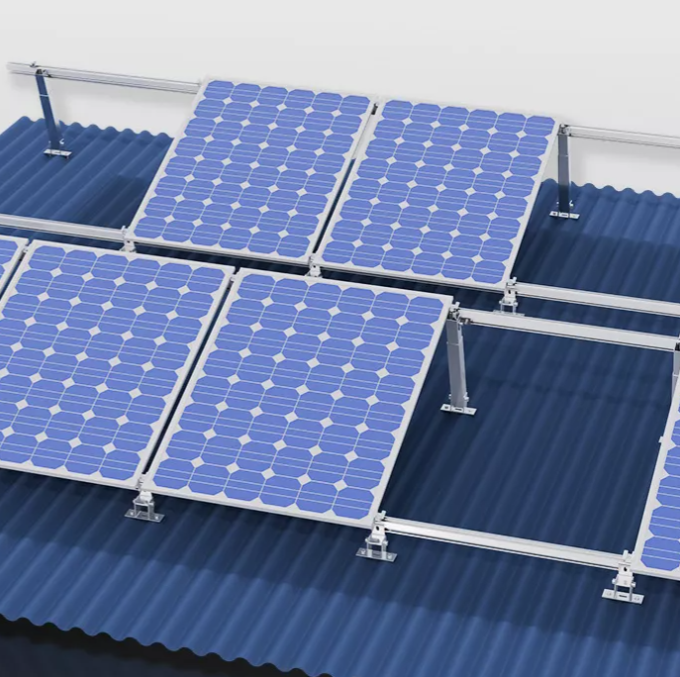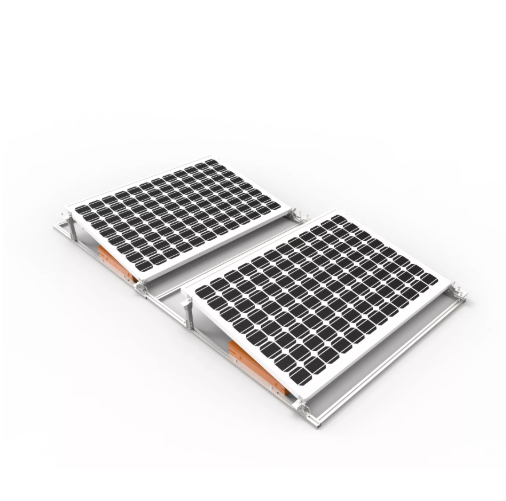


Views: 0 Author: Site Editor Publish Time: 2025-08-27 Origin: Site








Did you know that dust can significantly reduce solar power generation? Photovoltaic (PV) systems rely on sunlight to generate energy, but dust can block this essential resource.In this post, we’ll discuss how dust affects PV power generation and the challenges it creates. You’ll learn about the impact on efficiency, energy loss, and possible cleaning solutions.

Photovoltaic (PV) power generation is a method of converting sunlight directly into electricity using solar cells. These cells are made from semiconductor materials like silicon, which absorb sunlight and generate an electric current. This process is known as the photovoltaic effect.
PV systems consist of solar panels made up of many solar cells. When sunlight hits these cells, it excites the electrons in the material, causing them to move and create electricity. This electricity is then sent to an inverter, which converts it into usable alternating current (AC) power for homes and businesses.
Solar energy is a clean, renewable resource. It reduces reliance on fossil fuels, lowers carbon emissions, and helps combat climate change. With more installations, it can power entire cities, providing an eco-friendly alternative to traditional energy sources. Plus, solar energy is free once the system is installed!
Dust accumulation on solar panels, known as "soiling," can significantly reduce their energy output. When dust particles settle on the surface of photovoltaic (PV) panels, they form a layer that prevents sunlight from reaching the solar cells. This process diminishes the amount of energy the system can produce.
The dust accumulation process occurs over time as particles are carried by the wind and settle onto the surface of the panels. In regions with high dust levels, this can happen quickly, leading to reduced efficiency.
Reduced Solar Irradiance: Dust forms a barrier on the panel, blocking sunlight from reaching the solar cells. This reduces the energy generated, as less sunlight can be converted into electricity.
Increased Temperature: As dust settles on the panel, it can trap heat. This raises the temperature of the solar panel, which negatively impacts its efficiency. Higher temperatures reduce the electrical output of the panels.
Increased Resistance: Dust can create resistive losses inside the panel. This happens when the dust particles cause a buildup of electrical resistance, leading to a reduction in the overall power generated.
Altered Surface Properties: The dust layer changes the surface characteristics of the PV panels. This can affect the way the panels interact with sunlight and further decrease their ability to generate electricity.
Dust particles come in different sizes, masses, and distributions, all of which affect how much sunlight they block. Smaller dust particles tend to cling more tightly to the panels, increasing the risk of power loss. Larger particles may not adhere as well but can still contribute to shading and reduce solar panel efficiency.
Dust Particle Size: Finer particles (less than 10 microns) tend to stick to surfaces more than larger particles, leading to greater efficiency loss.
Mass: The heavier the dust load, the more sunlight is blocked, causing a significant reduction in energy generation.
Distribution: How dust is spread across a panel impacts the total area affected. Uneven dust accumulation may lead to partial shading and inconsistent performance.
Rainfall: While rain can help clean off dust from panels, light rainfall may cause the dust to become more sticky. Heavy rain, on the other hand, can effectively wash away the accumulated dust, especially from tilted panels.
Sandstorms: In regions prone to sandstorms, dust accumulation is severe. These storms bring large amounts of dust and sand, leading to quick and significant reductions in PV efficiency.
Wind Speed and Humidity: High wind speeds can blow dust onto panels, while high humidity can make dust adhere more strongly to surfaces, especially in tropical climates.
Geographic Location: Areas in deserts or arid regions experience higher levels of dust accumulation compared to other regions. This leads to more frequent cleaning needs and greater energy losses in PV systems.
Energy and Revenue Losses: Dust accumulation leads to energy production losses, which directly impacts revenue. In some cases, energy output can decrease by over 30% in areas with frequent dust storms. This results in significant financial losses, especially for large-scale solar farms that depend on maximum efficiency.
Maintenance Costs: As dust reduces solar panel efficiency, cleaning becomes necessary to maintain performance. The cost of cleaning—whether manual or automated—adds up over time. In dusty regions, frequent cleaning is required, increasing operational expenses.
Long-Term Performance: Dust not only affects short-term output but also influences the long-term performance of PV systems. The increased need for cleaning can accelerate wear and tear on the panels, shortening their lifespan. This leads to higher replacement costs and additional maintenance needs as the system ages.
Manual Cleaning: Traditional cleaning methods involve using brushes, rags, and water. While effective, manual cleaning can be time-consuming and labor-intensive. It also uses water, which may be scarce in some regions, adding to the operational cost. Additionally, it can cause physical wear on the panels if done too frequently.
Automated Cleaning Systems: Robotic and drone cleaning systems are becoming increasingly popular. These systems can automatically clean solar panels, reducing the need for manual labor and improving efficiency. Drones can cover large areas quickly, while robotic cleaners can use brushes or air jets to remove dust effectively, making them ideal for large-scale installations.
Electrostatic Dust Removal: This emerging technology uses electrostatic charges to repel dust particles from the surface of PV panels. It is an innovative solution that minimizes the buildup of dust without physical contact, reducing the risk of damage. It also requires less water and is more efficient in the long term.
Self-Cleaning Coatings: Hydrophobic coatings are applied to PV panels to make them water-resistant and repel dust. These coatings reduce the amount of dust that adheres to the panel, keeping the surface cleaner for longer periods. The development of self-cleaning technologies is seen as a promising solution for areas prone to high dust accumulation.
Insights from Mathematical Models: Mathematical models help predict how often solar panels should be cleaned based on dust accumulation rates. These models take into account factors like particle size, local climate, and panel angle. Typically, cleaning frequencies are higher in arid or desert regions, where dust buildup occurs more rapidly. Regular cleaning schedules can significantly improve the efficiency of PV systems and prolong their lifespan.

Energy Losses in Arid Regions: In desert areas, dust accumulation on solar panels leads to dramatic energy losses. In places like Saudi Arabia, UAE, and Egypt, dust storms are common, causing energy losses of up to 30% or more. These regions often require more frequent cleaning and maintenance to keep PV systems running efficiently.
Specific Examples:
Saudi Arabia: In Dhahran, dust buildup reduced solar power output by 10-17% after just six weeks of exposure.
UAE: In Sharjah, sandstorms resulted in a 12.7% decrease in PV system performance over several months.
Egypt: The Sahara Desert’s dust storms caused a 5% drop in power generation in Aswan, showing the significant impact on solar efficiency in these harsh environments.
Comparison of High vs. Low Dust Environments: In regions with less dust, like parts of Europe and North America, the impact of dust on PV efficiency is much lower. However, dust still accumulates over time, especially in urban areas or near construction sites, but the effects are less severe than in arid regions.
Case Studies and Findings:
Europe: In northern European countries, such as Germany and the UK, dust levels are lower, leading to minimal energy losses. However, periodic cleaning is still necessary to maintain peak performance, especially in areas with high air pollution.
North America: In areas like California, dust accumulation is noticeable but less impactful compared to desert regions. Solar installations in such areas experience a smaller reduction in performance, typically around 5-10%.
Mathematical models are essential tools for predicting how dust affects the performance of photovoltaic (PV) systems. These models calculate the impact of dust deposition on the solar panels by considering various factors that influence energy loss.
Dust Deposition and Its Effects on Energy Loss: The models use variables like dust particle size, density, and environmental factors (like humidity and temperature) to estimate how much dust accumulates on solar panels. These calculations help predict the reduction in energy production due to blocked sunlight.
Key Variables Considered in These Models:
Dust Size: Smaller particles tend to stick more to panels, creating a thicker layer that reduces energy output.
Dust Density: The heavier the dust load, the more sunlight is blocked, causing more significant power losses.
Humidity and Temperature: High humidity can cause dust to cling more tightly to surfaces, while temperature influences how dust affects panel efficiency by increasing or decreasing resistance.
Example Models and Their Accuracy:
Models that incorporate dust deposition rates and environmental conditions have been shown to predict energy losses accurately in regions with high dust accumulation, such as desert climates.
For instance, models used in Saudi Arabia, where dust storms are common, have shown a high degree of accuracy in predicting energy losses, which can be as high as 30% under extreme conditions.
Emerging Technologies in Dust Removal: New technologies are being developed to help remove dust more effectively from solar panels. Robotic systems and drones are now able to clean panels automatically, reducing labor costs and minimizing the risk of damaging the panels during cleaning. These systems use brushes, air jets, and even ultrasonic waves to dislodge dust efficiently.
Future Research and Innovations in Self-Cleaning and Anti-Dust Coatings: Self-cleaning technologies, such as hydrophobic coatings, are becoming more common. These coatings help prevent dust from sticking to solar panels, making it easier for rain or wind to wash it away. Research is ongoing to improve these coatings’ effectiveness and durability, especially in harsh environments like deserts.
The Potential Role of Artificial Intelligence: AI has the potential to revolutionize the way we clean and maintain solar panels. By using AI algorithms, cleaning schedules can be optimized based on weather data, dust accumulation rates, and panel performance. This would allow for more efficient cleaning, reducing the need for manual labor and minimizing downtime, ensuring solar panels operate at peak efficiency.
Addressing the impact of dust on photovoltaic power generation is crucial for maintaining optimal panel performance. Clean panels ensure higher efficiency, reducing energy losses. Improving PV system efficiency brings both economic and environmental benefits. Effective dust management is essential to maximize solar energy production. Let's invest in better cleaning technologies and practices for a cleaner, more efficient future.
A: Dust accumulation generally does not cause permanent damage, but it reduces efficiency and can shorten the panel's lifespan due to frequent cleaning.
A: Robotic or drone cleaning systems are effective, as they can handle large areas and harsh conditions.
A: Cleaning should occur more frequently, typically every 2-4 weeks, depending on dust accumulation and weather conditions.
A: Yes, dust impacts both equally, but panel performance loss can vary based on the environment and dust type.
A: Higher dust density results in greater power loss, as more sunlight is blocked from reaching the panels' surface.